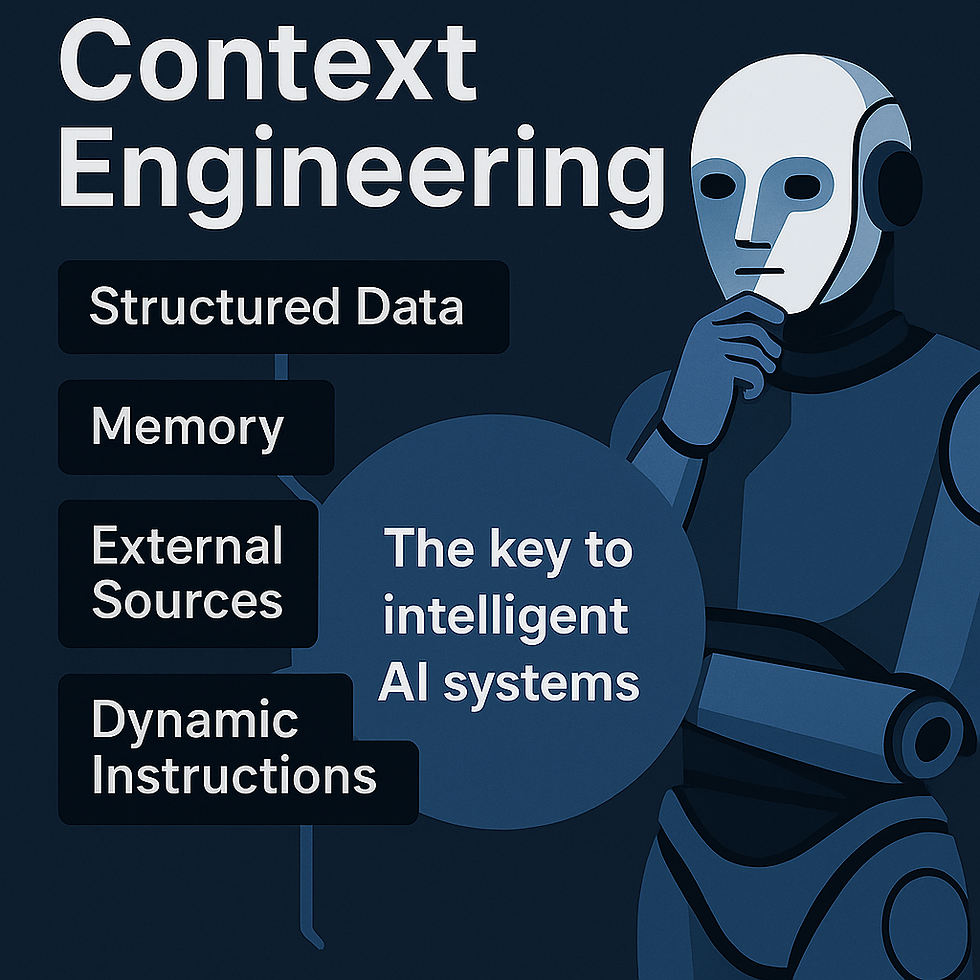Why Context Engineering is the Key to Successful AI Integration
- Generative AI Works

- Jul 27
- 2 min read

The hype around generative AI is unstoppable – but many companies are still facing disappointing results. Their applications often fail, behave unpredictably, or fall short of expectations. Why?
Because too many are still focused on prompt engineering – and ignore the real key to intelligent automation: Context Engineering.
What is Context Engineering?
Context Engineering is the systematic design of the environment in which an AI operates. This includes not only prompts but also structured data, memory, external information, user context, and system instructions. It ensures that an AI system is not only technically functional but also meaningful, relevant, and aligned with company goals.
Think of it as the architecture of the AI experience. Instead of just feeding the model a sentence and hoping for the best, you’re building a scaffold that helps the AI understand who it’s talking to, what the situation is, and what goals it should achieve – in real time.
Why is Context Engineering crucial?
Modern AI agents – especially agentic systems – must act autonomously in complex environments. To do this, they need more than a prompt: they need a world. A context in which they can act meaningfully.
Without it, they hallucinate. They lose track of tasks. They give answers that sound good but have nothing to do with the real problem.
With the right context, however, the AI becomes a real co-pilot.
Components of a strong context
A well-designed AI context includes:
User context: Who is asking? What do we already know about them?
Task context: What is the AI supposed to do? What are the success criteria?
System context: What instructions, limits, and capabilities does the AI have?
Data context: What information is available – and how up to date is it?
Memory: What has already happened in this conversation or workflow?
This kind of contextual architecture is not a “nice to have” – it’s essential for AI systems that make decisions, carry out tasks, or interact with customers.
From Prompt to Context: A Paradigm Shift
Many companies still confuse prompt engineering with AI design. But just as good UX design is more than pretty buttons, good AI design is more than clever prompts.
Prompt engineering is like shouting a wish into the void.
Context engineering is like building the room in which the conversation happens.
How to get started?
If you're still designing isolated prompts, it’s time to zoom out.
Think in systems, not sentences.
Design for continuity, not one-shot interactions.
Provide your AI with memory, structure, and guardrails.
Build a context-aware infrastructure that supports reliable, explainable, and scalable AI use.
It’s time to stop improvising and start engineering.



Comments